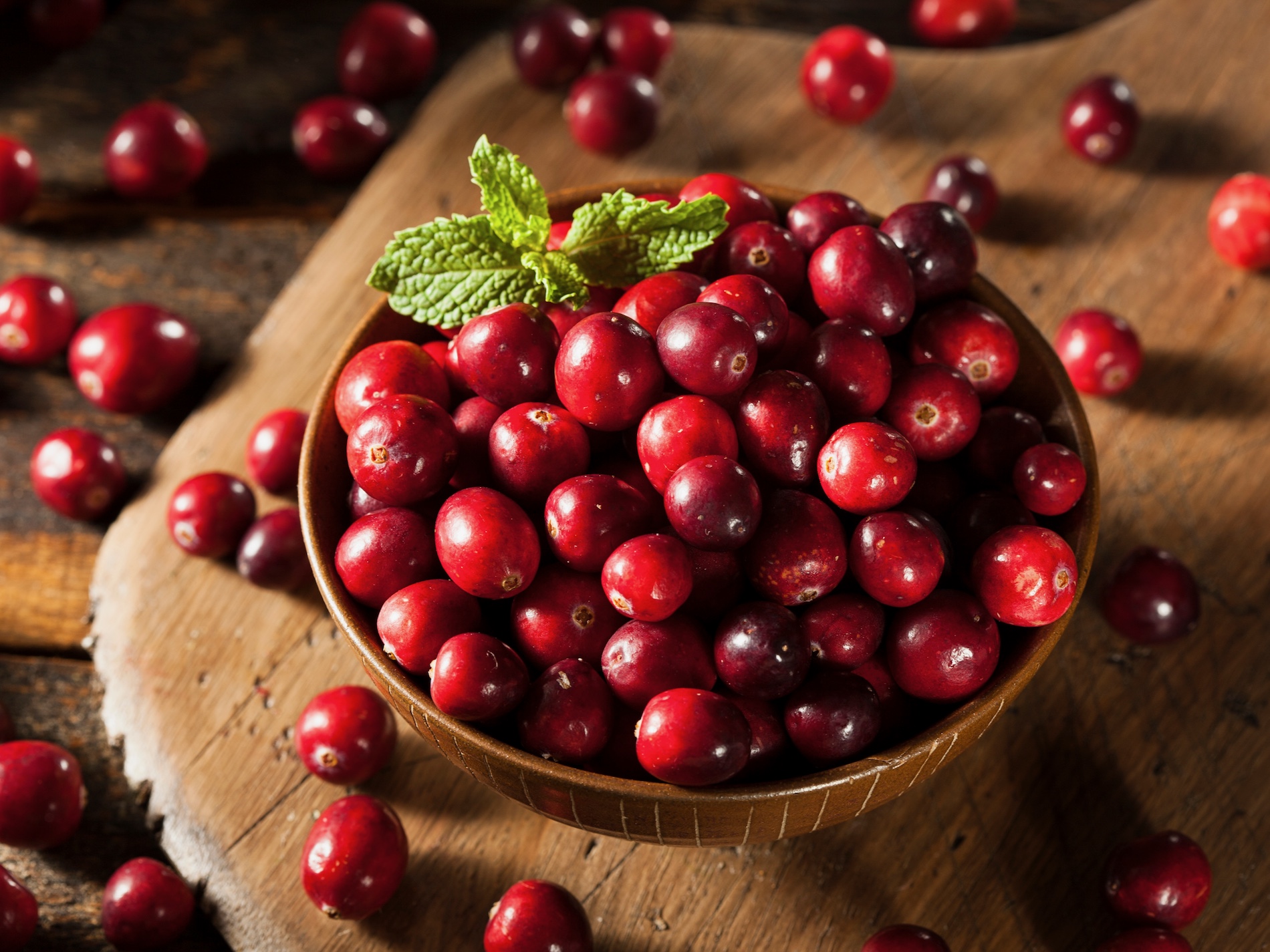The Christmas Cranberry
With their late, mid-October harvest time, and exceptional shelf-life – thanks to benzoic acid, a naturally occurring preservative – cranberries became a natural accompaniment to the Thanksgiving turkey feast for the early settlers. It is believed that, as the tradition took root, the pairing of turkey and cranberries spread to the other major celebration that also tends to see turkey on the table – Christmas.
Believable Berry Benefits?
The cranberry is packed with natural goodness, like vitamin C, flavonoids and antioxidants, which all add up to make it one mighty berry. It’s said that it may lower blood-sugar levels, reduce symptoms of allergies, benefit your cardiovascular and immune systems, help stop kidney stones and fight off urinary-tract infections (UTI), to name just a few. However, don’t assume store-bought cranberry juice is the long-sought elixir of life – the high sugar content and relatively low levels of juice concentrate have made its efficacy questionable.
Frontier Foraging
Fancy finding your own berry bounty? Local food forager, Kevin Kossowan, advises heading to the northwest corner of Hawrelak Park, where you can find the bright red orbs of the highbush cranberry one to three metres from the ground. You’ll also find them along the riverbank in Terwillegar and Gold Bar Parks.
Watch out though — baneberry, another red-fruited shrub, can be confused with cranberry, and is very poisonous. While the cranberry has a single, flat, white seed, the baneberry is found in pin-cushion clusters and has a richer, opaque red colour and several small seeds in each berry.
If you’re eating the berry fresh, wait until after the first frost in early October, as the cold sweetens the berry. You may still be able to find a handful today as a quick snack on a chilly cross-country ski, but don’t eat too many raw berries— excess can cause stomach cramps.
